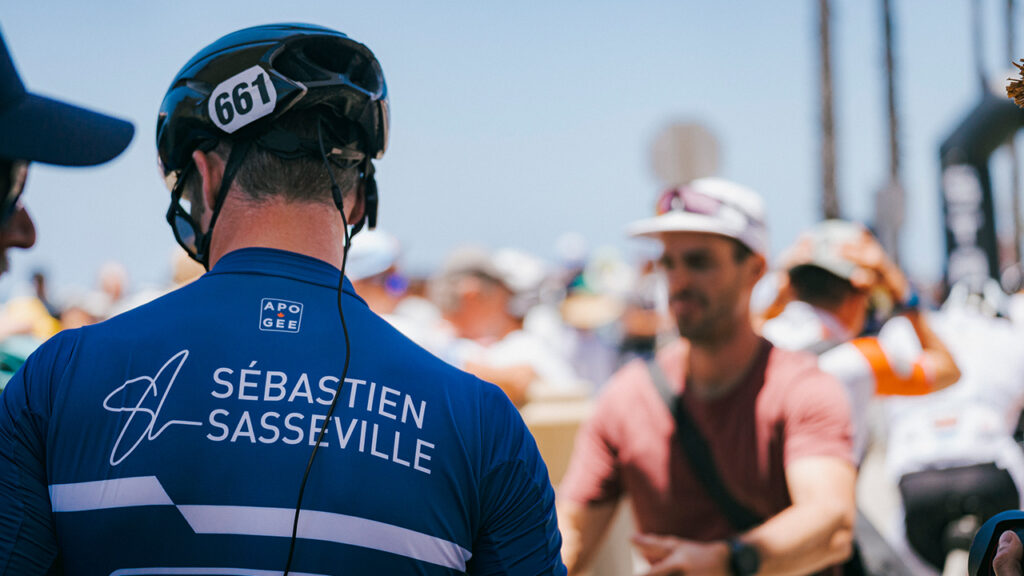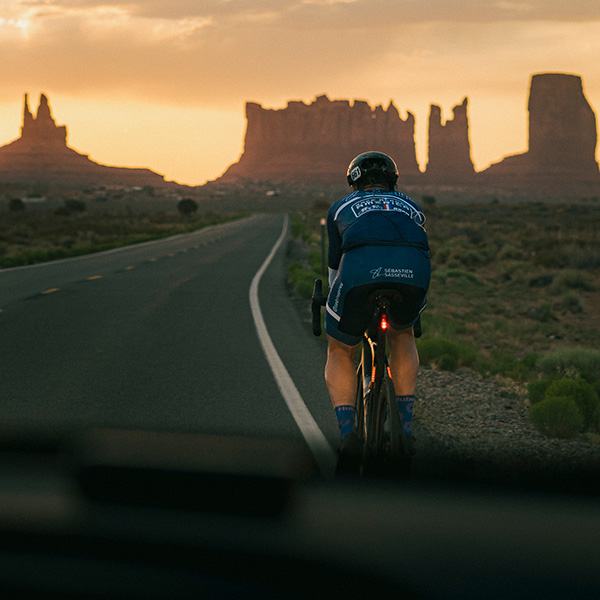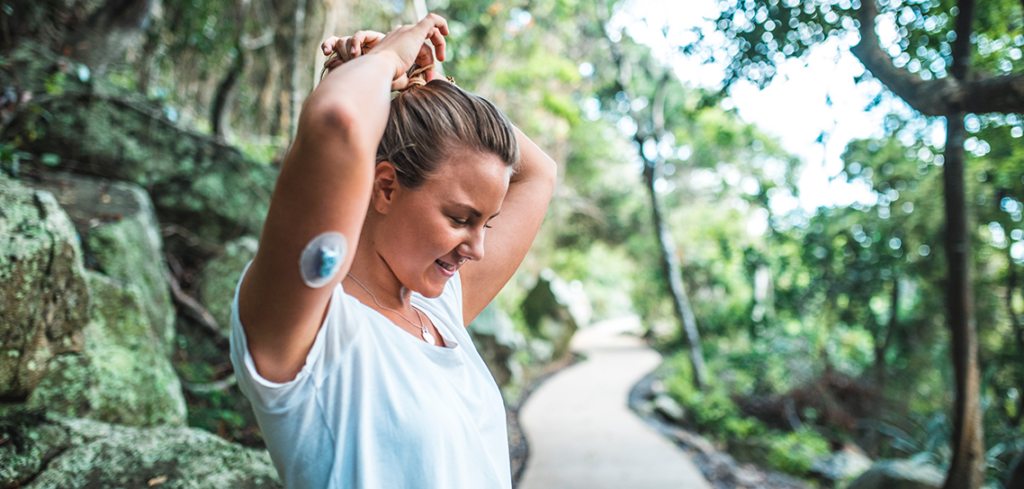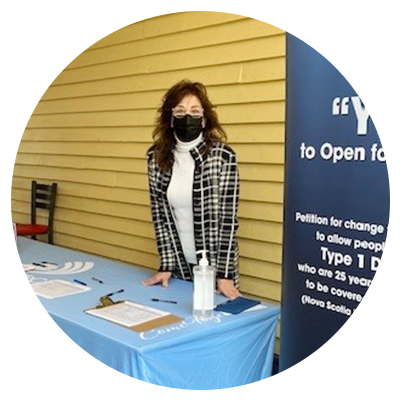
Sébastien was diagnosed with type 1 diabetes (T1D) in 2002. He made a commitment to himself then that T1D would never keep him from living life to the fullest, and he has followed through on that promise to himself. Since then, Seb has run across Canada, climbed Mt Everest, and participated in a number of the world’s hardest endurance races. On June 28th, 2021, he started a ride across Canada Canada in support of universal access to diabetes devices for all Canadians living with the disease. And this past June, he took on The Race Across America, or RAAM, an ultra-distance road cycling race held across the United States known to be the toughest in the world.
JDRF had the chance to connect with Seb and ask about his experience with RAAM.
What made you decide to pursue this race, and so close after riding across Canada?
“When I came back from the ride across Canada, I was tired, but I was happy and proud about what I had accomplished. There is always a recovery phase, it’s part of the deal that there is some suffering involved, Before during and after. Just a very small part of it. I don’t like to suffer more than anyone else, but it’s not the part I focus on – it’s what I learn, the impact, how I grow, that is the appeal. When you look at it from that angle, it’s tough not to continue doing these things.
RAAM is a much tougher ride, physically and mentally. People get hung up on it being shorter than the ride across Canada, but the course is far more demanding. It’s a lot more climbing, and it has a cutoff, it’s a race. So, it has a different context. And you have twelve days maximum to complete it. There is no margin of error. You must be on your bike 20-22 hours a day. 12 days of 1-2 hours of sleep. It’s the toughest ultra-cycling event in the world.”

This is an extremely intensive undertaking for anyone but competing in race of this kind while managing your diabetes adds another layer of challenge and complexity. How did that impact the race for you?
“It had a huge impact, and a big issue was the lack of cell phone reception – that was a massive surprise. We thought we would lose reception every once in a while, but the course goes through very remote areas throughout the course. That’s a safety thing so you aren’t riding on highways, it’s a set course. We ended up days without coverage, or very spotty coverage. The impact was that I was planning on checking my blood glucose on my watch, but that goes through the internet. I couldn’t get it on my phone -so my team couldn’t see my blood glucose readings in real-time. So, we didn’t expect not having the data. And this impacted how I controlled my diabetes.
And honestly – it was a big source of frustration. A lot of people who don’t understand T1D believe – oh you have a CGM (continuous glucose monitor), and insulin pump – so you’re fixed. And some people think I must be different. That diabetes must be easier for me because I do these kind of endurance events. I’m not. I’m like everybody. I go through the same challenges. And I hate it sometimes. I try and embrace it as much as I can. But I’m human like everyone else. And if it slows me down, I tell myself that this is my life and journey. But it takes up time and space in your head and body. And it impacts everything.
There was a pharmacist there (at the RAAM), who probably understood it the most. And he came up to me almost every day, to say how amazing he thought it was that I was competing in this race and have T1D. Although it felt good, it was a reminder that most people don’t have his knowledge and don’t understand what we have to go through every single day.
But I must say – it was still far better than last year (the ride across Canada). Because we learned a lot from last year. These types of races are never going to be easy. So, you have to adapt.
Type 1 diabetes is the one thing that slowed me down the most during this race. And I’m immensely proud that I was even on the starting line. It’s by qualification or invitation only. I was the only Canadian. To race, to race strong, to finish, to finish 12 out of 33 who started, that’s a very strong performance.”
How would you describe your endurance sport as a metaphor for living with T1D?
“I hear a lot from people, when they learn about what I do that ‘It’s so out there, it’s hard to relate’ We were fully aware of it – a year ago when I started looking for sponsorship and funding, I did wonder how to connect this with the larger world outside of the T1D community, because it’s so outside the realm of most people’s experience (living with diabetes).
But for me, it’s such a parallel for life managing diabetes. One rider, a team of 10 people, working 24/7. It’s like with T1D, it’s the team that supports, the team that takes all the decisions. They prepare the bike and fix all the issues. It really is a collective effort and success. You can’t even get through day 1 without the team.
I relate this to how living with diabetes really takes a community too. None of us do this completely on our own.”
Do you see yourself continuing to pursue these types of high intensity endurance sports?
“I don’t plan on stopping. I don’t ask people when they play golf when they are going to stop. It’s something they love. I’m aware that isn’t a typical kind of life, but I have so much fun, I learn so much, I grow so much. I’m not an adrenaline chaser. I won’t jump out of a plane. But these I will keep doing as long as I can. They are life-enriching experiences. I finished, but at the end of the day – whether you finish or not, it’s a very rich experience. The team becomes like your family. We created something very special. I was a very magical and powerful experience. So, I plan to continue doing these things for a long time.”

Any final thoughts?
“We need a cure. There are people like me who live well with diabetes, and we all need to live a fulfilled life before there is a cure. We do need to live in the now. But the fact of the matter is that this is tough to live with. And there were bad diabetes days. And it slowed me down. I know a lot about type one and exercise, it’s my job and I keep it as well-managed as possible. And even still, I have highs, I have lows. I hate it sometimes. My reality is the same as others with this disease.
This is why I am an ambassador for JDRF. Because I want to be part of the cure.”
Follow his journey on Instagram


